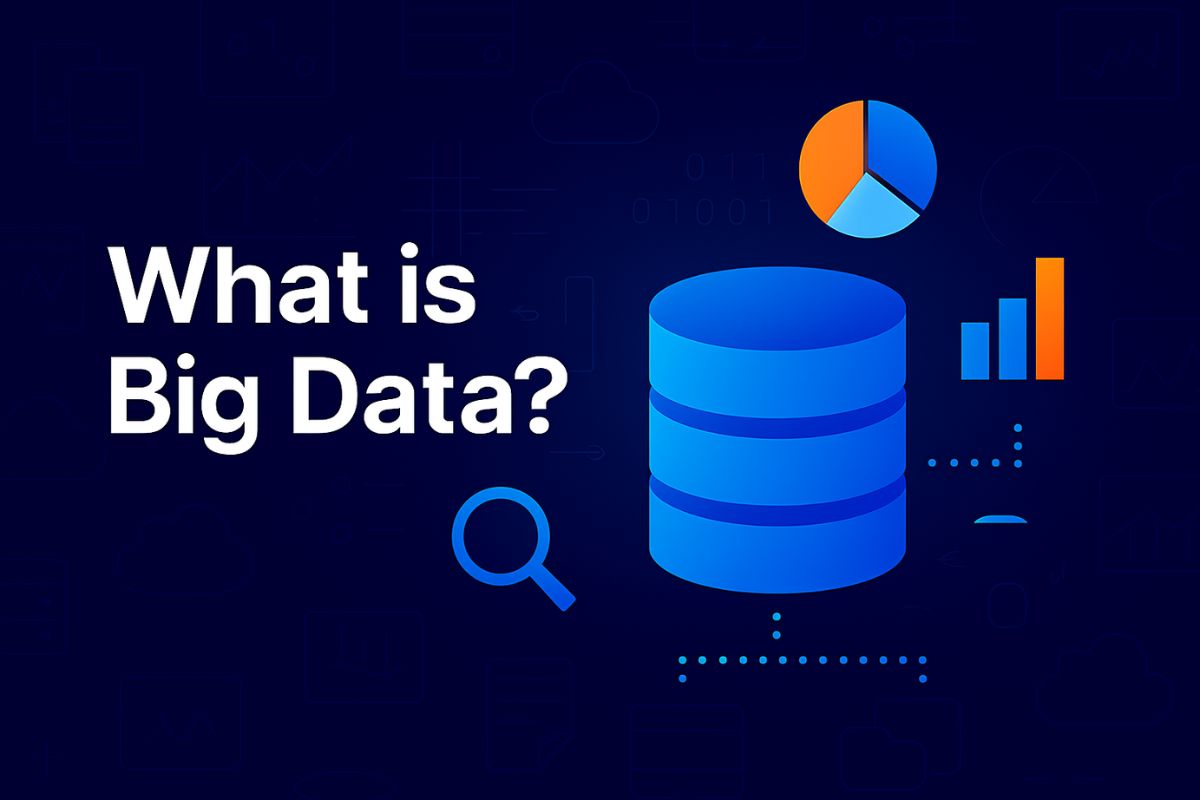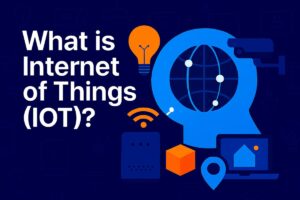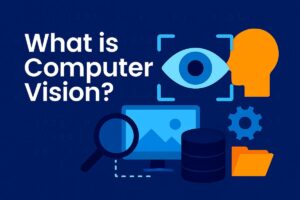Big Data refers to extremely large and complex datasets that traditional tools can’t handle efficiently. This guide explains the 5Vs of Big Data, how it works, real-world applications in India, major tools and technologies, career options, and a step-by-step roadmap to learn Big Data in 2025 — ideal for students and working professionals.
Every second, terabytes of data are generated through online payments, YouTube videos, Google searches, and app usage. But where does this data go, and how is it used?
Welcome to the world of Big Data — a revolutionary force that’s transforming businesses, governments, education, and everyday life. From Aadhaar authentication to your Netflix suggestions, Big Data is everywhere.
This blog is your beginner-friendly, 2025-ready guide to understanding Big Data — with practical examples, real applications in India, tools, and learning paths.
What is Big Data?
Big Data refers to large, fast, and diverse sets of information that are too massive and complex to be processed using traditional data tools like Excel or SQL databases.
In simpler words:
“Big Data is data so large and varied that it requires new tools and technologies to store, analyze, and extract meaningful insights.”
Characteristics – The 5 Vs of Big Data
- Volume – Gigabytes to petabytes of data
- Velocity – Data generated in real-time (e.g. UPI transactions)
- Variety – Text, images, audio, video, PDFs, sensor data
- Veracity – Accuracy and reliability of data
- Value – Actionable insights gained from data
Big Data vs Traditional Data
| Feature | Traditional Data | Big Data |
|---|---|---|
| Size | MBs to GBs | TBs to PBs+ |
| Structure | Structured (tables, rows) | Structured + Unstructured |
| Tools Used | Excel, MySQL | Hadoop, Spark, NoSQL, Hive |
| Processing | Batch | Real-time + Batch |
| Speed | Slower | High speed |
| Scalability | Low | Cloud-native scalability |
| Example | Student records | Aadhaar database, UPI logs |
Applications of Big Data in India
1. Governance & Smart Cities
- Aadhaar database (over 1.3 billion records)
- Smart city traffic, CCTV, and pollution control data
- Election Commission uses Big Data for voter analysis
2. Healthcare
- COVID-19 dashboard & contact tracing
- AI-assisted disease prediction using diagnostic records
- eSanjeevani – Telemedicine powered by data
3. Agriculture
- CropIn uses satellite & weather data for crop advisory
- Real-time irrigation planning using IoT sensors
- Soil and pest monitoring in rural India
4. Finance & Banking
- Fraud detection in Paytm, PhonePe, Razorpay
- Loan approval models in NBFCs and credit scoring
- UPI transaction trend analysis by NPCI
5. Retail & E-commerce
- Flipkart’s recommendation engine
- Inventory prediction during sales (Big Billion Day, etc.)
- Meesho and Amazon’s dynamic pricing algorithms
Top Big Data Technologies in 2025
Data Processing Tools
- Apache Hadoop – Handles massive storage & computation
- Apache Spark – In-memory fast analytics platform
Storage & Query Tools
- HDFS (Hadoop Distributed File System)
- NoSQL Databases – MongoDB, Cassandra
- Hive, Pig – SQL-like querying on Big Data
Visualization & Reporting Tools
- Power BI
- Tableau
- Google Data Studio
Cloud Platforms
- AWS, Google Cloud, Microsoft Azure
- Indian solutions: JioCloud, Netmagic
Chart: 5Vs of Big Data with Examples
| V | Meaning | Indian Example |
|---|---|---|
| Volume | Huge amount of data | Aadhaar biometric database (1.3+ billion users) |
| Velocity | High-speed data flow | UPI transactions per second |
| Variety | Different formats | PDFs, CCTV footage, social media, voice |
| Veracity | Accuracy & trust | Misinformation on WhatsApp vs official sources |
| Value | Business/social insights | Zomato customer feedback → menu optimization |
How to Learn Big Data – A Roadmap for Beginners
Prerequisites
- Python or Java basics
- SQL queries
- Understanding data structures
- Logical & analytical thinking
Learning Platforms
- NPTEL (IIT Madras) – Big Data Certification
- Coursera – Specializations from IBM, UC San Diego
- Simplilearn / Edureka – Paid + Free courses
- Apni Kaksha (YouTube) – Hindi-friendly Big Data guides
Practice Projects & Platforms
- Kaggle – Open datasets and competitions
- GitHub – Real-world open-source code
- IndiaAI.gov.in – Government learning portal
- Google Colab – Free cloud notebooks
Careers in Big Data
Top Job Roles
- Big Data Engineer
- Data Analyst
- Hadoop Developer
- Business Intelligence Analyst
- Data Architect
Salary Expectations in India
| Role | Entry-Level (₹/year) | Experienced (₹/year) |
|---|---|---|
| Big Data Analyst | ₹5–7 LPA | ₹12–15 LPA |
| Hadoop Developer | ₹6–8 LPA | ₹10–14 LPA |
| Data Engineer | ₹7–9 LPA | ₹15–18 LPA |
| Cloud Data Architect | ₹12–18 LPA | ₹25–35 LPA+ |
Top Hiring Companies
- Infosys, Wipro, TCS, Accenture
- Flipkart, Zoho, Meesho, Razorpay
- ISRO, NIC, CDAC, DRDO
- AI & Data startups (Fractal, Quantiphi)
Challenges & Limitations
Real-World Issues
- Privacy concerns (especially post-2023 Data Protection Bill)
- Infrastructure gaps in Tier-2/3 cities
- Skill gap — especially outside metro cities
- Storage & processing costs for startups and MSMEs
- Bias and data quality in predictive models
Free Tools & Resources
| Tool/Platform | Purpose | Free? |
|---|---|---|
| Apache Hadoop | Storage/Processing | Yes |
| Apache Spark | Real-time computation | Yes |
| Google Dataset Search | Dataset discovery | Yes |
| Tableau Public | Visualization | Yes |
| Kaggle | Project + learning | Yes |
| Talend Open Studio | Data integration | Yes |
Common Misconceptions About Big Data
- “Big Data = Just large files” – It’s more than volume. Variety and velocity matter too.
- “Only tech companies use it” – False. Even governments and farmers use Big Data.
- “You need a degree to work in Big Data” – Many roles are skill-based, not degree-based.
- “Excel is enough for analysis” – Not for unstructured or real-time data.
Conclusion
From tracking COVID-19 to optimizing your Swiggy order, Big Data powers modern India. Whether you’re a student preparing for a future-proof career or a professional looking to transition into data roles, Big Data offers endless opportunities.
Start by learning the basics, use free tools, explore Indian use cases, and work on real projects. The future is data-driven — and it starts with you.
FAQs
1. What is Big Data in simple words?
It refers to large and complex sets of information that can’t be handled by traditional tools.
2. What are the 5Vs of Big Data?
Volume, Velocity, Variety, Veracity, and Value — the five defining characteristics of Big Data.
3. How is Big Data used in India?
In Aadhaar, UPI, e-governance, telemedicine, e-commerce, and agricultural analytics.
4. How can I start learning Big Data?
Learn Python/SQL, join NPTEL or Coursera courses, and practice on Kaggle or GitHub.
5. What tools are used in Big Data?
Hadoop, Spark, Hive, MongoDB, Tableau, Power BI.
6. Is Big Data a good career in India?
Yes, there’s growing demand across IT, government, and startup sectors.
7. Can a non-tech person learn Big Data?
Absolutely. With the right resources and practice, anyone can enter this field.


